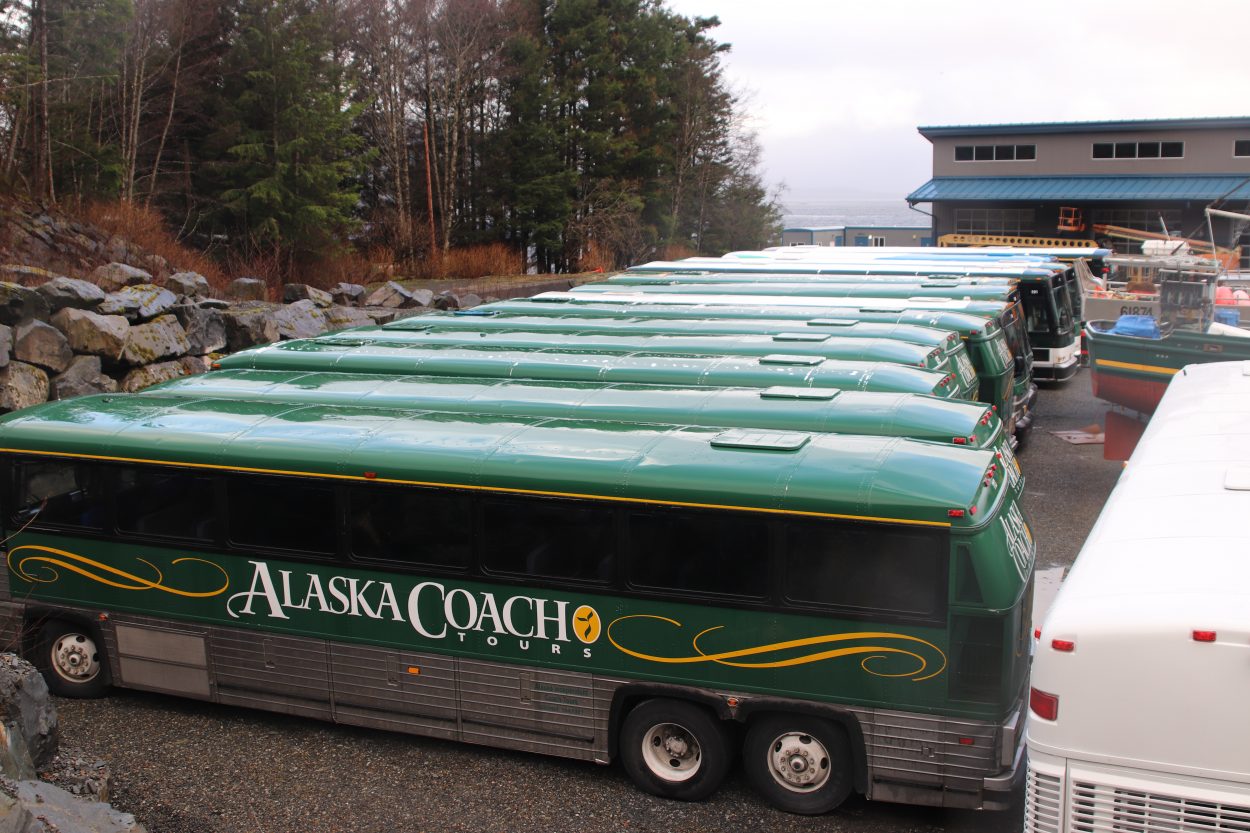
Traffic congestion will be a primary concern as Sitkans buckle in to plan for future tour seasons.
The Sitka Planning Commission on Wednesday (11-16-22) reviewed 2022’s Tourism Operations, to create recommendations for improvements in 2023 and beyond. Much of the forward-thinking, however, focused on how best to move half-a-million people in-and-out of town.
Listen to the entire November 16, 2022, Sitka Planning Commission meeting.
The starting point for the Sitka Planning Commission was data from a survey taken by citizens at the end of last summer’s season. Respondents had plenty of feedback – most of it positive – on the closure of Lincoln Street on days with high passenger volumes. But the 74 days that Sitka’s main downtown thoroughfare was closed to vehicles didn’t solve congestion elsewhere. Amy Ainslie, Sitka planning director, said addressing traffic and visitor dropoff and pickup would be a big concern for next year, 2024, and into the future.
Next on the list was an issue that’s been gaining momentum in public discussion lately.
“And then secondly, there are so many comments in the community survey about bus electrification,” said Ainslie.
Chris McGraw owns and operates the Sitka Sound Cruise Terminal, where most of Sitka’s 383,000 passengers disembarked in 2022. That number could be much larger in 2023, possibly as many as 200,000 more. That would create round-trip bus traffic five days a week to downtown Sitka and back.
Even so, McGraw says electric buses don’t pencil out.
“As for the electrification of bus transportation,” said McGraw, “a 45 foot motorcoach, like we operate is in the $1-1.2 million range to purchase, and we have 17 of them. So the feasibility of a private entity funding electric buses at this point is non existent.”
Bruce Conine runs a wildlife tour business out of small buses. He offered a “50,000-foot” view of the problem. He recommended that Sitka look past buses, and go right to rail.
“As long as it’s electric and moving people, you guys will have access to huge amounts of government money,” Conine suggested. “And maybe even a company like Elon Musk’s boring company could bore a hole in the ground and pop up at the Centennial Building. It’d be a unique thing. I think some of the cruise ship passengers might even think it would be a cool stop to go and actually ride in a tunnel made that way. And it could be very fast. You could have a tunnel underground that maybe did 60-80 miles an hour…. I’d love to see it underground, just wouldn’t mess up our little town.”
Conine was perfectly serious about electric rail. Part of future planning is thinking big. His idea doesn’t sound so far-fetched when he contrasts it to the reality of moving almost 600,000 people by bus.
“But rather than have to hire 60 bus drivers to try to run that many people and keep that much machinery going on the road, which is very hard,” said Conine, “to have a rail system, they could bring them in quick, and get it paid for by government funds. Why not?”
Another, more down-to-earth approach, came from an unlikely source: Laurie Booyse, director of Visit Sitka. Booyse thought solving Sitka’s problem with visitor transportation included improving transportation for locals, by addressing the shortage of taxis in town, and optimizing the public transportation system, called The Ride.
“This is no reflection on the management of The Ride,” said Booyse. “But The Ride — our public transportation system –I think needs to be looked at as part of long-term planning. Who is it servicing? How is that working right now? It only works Monday through Friday. It doesn’t service the airport. We don’t have enough taxis, and people are walking into town over the bridge because they can’t get from the airport here.”
The Planning Commission’s task now is to make recommendations to the Assembly about 2023 and beyond, and many of them will expand on efforts begun last year on topics like temporary restroom locations, food cart permits, signage, and safety improvements.
This is a lot to bite off for a group whose traditional job involves reviewing and approving conditional use permits and variances. As the ninety-minute meeting drew to a close, Commissioner Darrell Windsor offered one last recommendation for municipal government.
“I think the assembly how to make a Tourist Planning Commission separate from this commission,” Windsor said, as laughter rippled around the table.






























